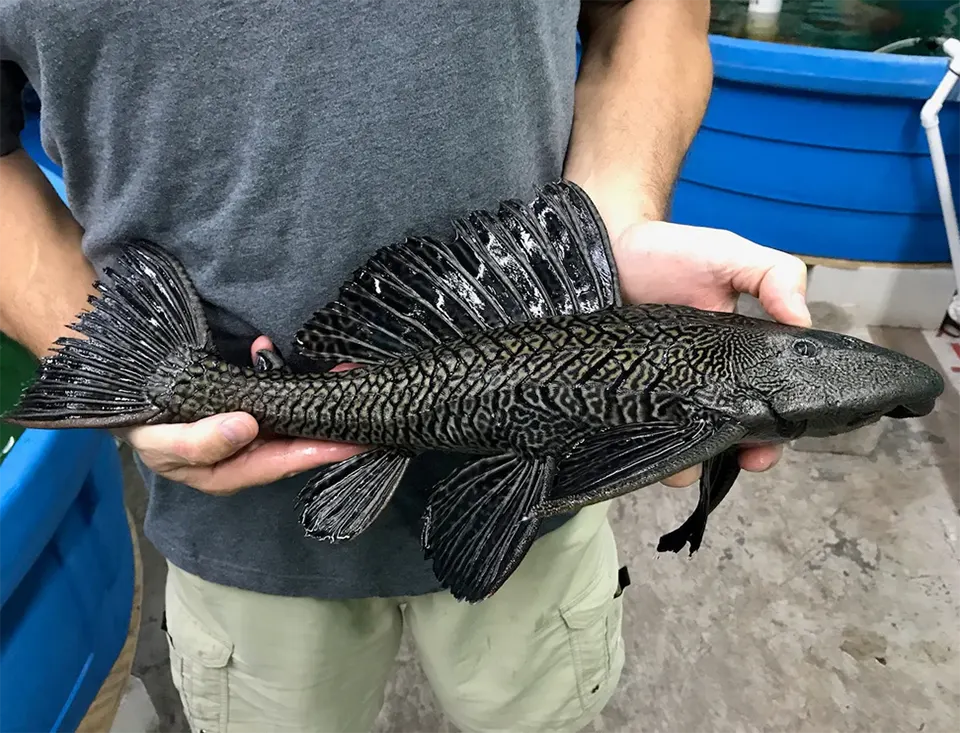Managing a pond in Florida often means battling aquatic weeds, invasive vegetation, and weed-choked shorelines. One of the most effective biological tools you can add to your pond management toolbox is the sterile grass carp (Ctenopharyngodon idella, triploid). These non-reproducing fish are legally permitted and, when used properly, can maintain plant overgrowth under control naturally.
Natural Aquatic Plant Control
Sterile grass carp are herbivores with a strong preference for submerged and floating aquatic vegetation. They graze on pondweeds, hydrilla, coontail, naiads, and similar plants, species that often grow aggressively in warm Florida waters. Over time, they can drastically reduce the biomass of nuisance aquatic plants, helping to restore water clarity and free up space for open water and game-fish activity.
Compared to chemical or mechanical weed control, carp offer a longer-term, lower-maintenance solution. Once they are established, they continue working without repeated herbicide applications or intensive labor.
Benefits for Pond Ecology & Angling
Beyond weed reduction, sterile grass carp bring several side benefits:
- Improved habitat: Clearing excess submerged vegetation gives sportfish like largemouth bass more usable open water, improving both access and visibility.
- Reduced maintenance: Fewer demands for mowing, herbicide treatments, or physical removal of weeds means lower ongoing costs and effort.
- Cost-effectiveness: The upfront cost for fish and permit can be amortized over many years, making carp more economical than repeated chemical or mechanical interventions.
Key Considerations & Possible Downsides
To get good results (and avoid problems), keep these in mind:
- Stocking rate: The number of carp must match the vegetation load. If you undershoot, weeds persist. If you overshoot, you may eliminate plants you want to keep. Florida guidance often recommends 3–10 triploid grass carp per acre, depending on how severe the infestation is.
- Size at stocking: Larger carp (for example, 8 to 12 inches) fare better, as they are less vulnerable to predation by bass or other predators.
- Barriers / containment: The pond must be configured (or modified) so carp cannot escape to connected waterways. Permit conditions may require physical barriers or proper outlet design.
- Selective plant control: Grass carp are most effective on submerged plants; they may avoid some emergent or floating species. Also, overgrazing can remove beneficial plants that compete with algae, so careful planning is essential.
Florida Laws & Permit Requirements
Florida treats grass carp stocking seriously because of the ecological risk if non-sterile carp reproduce or escape. If you plan to use sterile grass carp, these legal requirements apply:
- Only triploid (sterile) grass carp are allowed. Diploid (fertile) grass carp are prohibited for stocking in Florida waters.
- You must obtain a permit from the Florida Fish and Wildlife Conservation Commission (FWC) before possessing, transporting, stocking, or transferring any grass carp.
- Suppliers must certify triploidy. The carp you receive must be certified sterile.
- Containment / escape prevention: Ponds must have barriers, appropriate outlet structures, or natural configurations that prevent carp escape as long as fish remain in the pond.
- Transfer and sale restrictions: Selling, transferring, or stocking carp is only allowed under permit. The recipient must hold a permit; documentation must be maintained.
More details are available on the FWC Grass Carp page.
Conclusion
Using sterile (triploid) grass carp in Florida ponds is a powerful, natural method to control aquatic vegetation, reduce maintenance, and improve pond usability for fishing. When you match the right stocking rate, use suitable fish sizes, and ensure secure containment, the benefits can be significant. But compliance with state laws, i.e., sterile fish, valid permit, and proper barriers—is non-negotiable to keep your pond both productive and legal.


